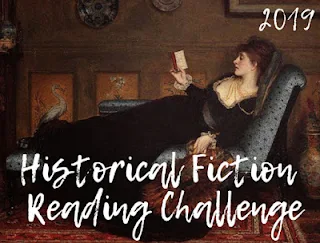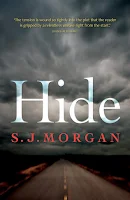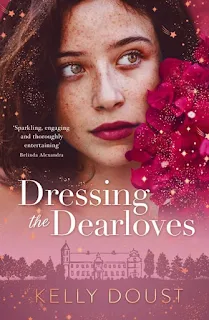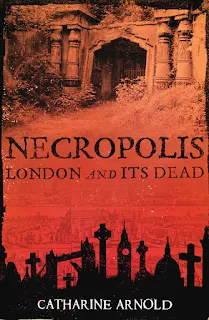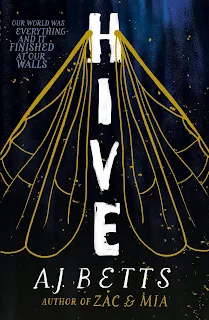Today I'd like to welcome Australian author S.J. Morgan to Carpe Librum for an interview and giveaway. You'll recall I reviewed her first adult novel Hide last month and gave it 4 stars. Now I get to ask her some questions! Welcome to Carpe Librum Sue!
Interview
If you had 20 words to convince a reader to pick up Hide, what would they be?
Oh gosh – that’s a challenge! I guess we hear things in soundbites or ‘grabs’ so I’d just throw twenty words in the air. And those words would be: menace, 80s, Wales, outback, grit, danger, fear, family, bikies, grief, loyalty, threat, violence, dysfunction, damage, healing, page-turning, friendships, crime, intrigue.
What was your favourite scene in Hide to write and why?
I loved writing all of it to be honest, but the scenes between Minto and Alec are my favourites. I had such a clear idea of both characters that I felt I was ‘there’ and I was just reporting what was going on. It’s such a great feeling when the words just arrive like that. I also really enjoyed writing the tense/tetchy scenes between Alec and Daniella and Alec and his dad – basically, it seems I love a good argument!
There are some pretty intimidating bikie characters in Hide. Have you met any bikies in real life?
I wish I could say that I once led a completely different life and was actually involved with a key member of a bikie gang myself, but I’m afraid that’s not the case. I’ve just always been fascinated – plus, one of my strongest memories of arriving in Australia was when we went on a big road trip and encountered a massive gathering of bikies along the way. I suspect that experience gave me the initial spark for the story. While I was writing the book, I also discovered some local connections to the bikie world so that gave me some great starting points from which to do research.
You’ve written books in several genres, including: short stories, young adult, children’s fiction and now your first adult novel, Hide. Tell us more, do you thrive on variety?
I don’t set out with the idea to write a children’s book or a thriller or a YA novel - I tend to simply start with a scenario, which appears quite clearly, but randomly, in my head. It’s that spark of an idea that then directs what sort of book it’s going to be – whether for teens or adults or children. I think ‘intrigue’ is probably what binds my stories together; I like that mounting sense of something ‘not right’ on the horizon. I guess I must just be drawn to mystery, generally.
Where do you do most of your writing? When do you do your best work?
It depends what stage I’m at. At the very beginning of an idea, it’s usually middle of the night scribbles from my bed. My favourite bit is the first draft when all the ideas are buzzing. At that point, my preference is to use a favourite pen and a gorgeous new notebook; then I like to get up early and go to my local café where there’s a mezzanine area that is almost always quiet. It’s like my own little nook and I love going there to write. I do have a study at home, with a desk which overlooks our garden. Unfortunately, I’m a total clutter-bug and the desk is often awash with papers and books, so I often end up working at the dining room table. Our two greyhounds, Dylan and Maxie are always stretched out, close by - and at some point, I try to remember to take them out for a walk so that I’m not sitting down all day! After dark, I’m not very productive in terms of words-on-a-page, but I do most of my thinking, planning and plotting just before I go to sleep.
What books are you reading at the moment?
I’m reading Lucy Treloar’s
Wolfe Island which I’m really enjoying. Unfortunately, with so much going on in the run up to
Hide’s release, I’ve been reading it in fits and starts which is definitely not my favourite way to enjoy a good book! Next up is Favel Parrett’s
There Was Still Love and after that, David Nichols,
Sweet Sorrow. I also bought Elizabeth Strout’s
Olive, Again recently, to add to the TBR pile before Santa (hopefully!) brings more.
What are some of your favourite books/authors?
I like variety in what I’m reading as well as what I’m writing. Last year, before
Heaven Sent came out, I was fully immersed in YA.
My Sister Rosa,
Between Us and
It Sounded Better in my Head stand out in my mind as ones I read and loved. I also enjoy women’s fiction, so I race through Liane Moriarty books and just about anything by Anne Tyler. I think my favourite books of the last couple of years would be Eva Hornung’s
The Last Garden which was just delicious, as was
Eleanor Oliphant is Completely Fine by Gail Honeyman.
I loved Eleanor Oliphant is Completely Fine too and have My Sister Rosa by Justine Larbalestier on my TBR. Do you have a favourite bookshop in Adelaide?
Well now, authors need ALL the bookshops so there can’t be favourites! Adelaide is blessed with lovely bookstores, so I feel very lucky to be so spoilt for choice. I recently visited Harry Hartog’s in Burnside and Dymocks Adelaide – both have staff who are wonderfully supportive of local authors and they both gave me a very warm welcome. We also have the beautiful Shakespeare’s Bookshop in Blackwood run by Becky and Mike Lucas, Dillons in Norwood, and up here in the Hills – my local – Matilda Bookshop. I’m fortunate to have so many gorgeous places to buy good books.
What books have you always meant to read and haven’t got round to yet?
Ooh, that’s an interesting question and I suspect I will think of a dozen more as soon as I’ve finished answering. There are quite a lot of classics that I’m ashamed to say I haven’t read:
Little Women, for instance;
Moby Dick;
Huckleberry Finn. The trouble is, with so many new, enticing books coming out, I can’t imagine ever finding the time to go back and read all the ones I should’ve read years ago.
It's a hard balance, isn't it? Is it true you love stationery? I would love to hear more. (I collect bookmarks and love washi tape, notebooks, pens and more).
Oh yes, I adore stationery – pens, pencils, notebooks, stick-on notes, paperclips, binders, folders – no amount of it can ever be too much. And I love drawers, boxes and ‘organising’ systems, so I like storing stationery as much as having it. Basically, I love anything with compartments, drawers and shelves. I also have a passion for old cash registers, adding machines and typewriters too – things with buttons/keys that make a nice mechanical sound. If I could buy an old library or an old post office from the 50s, with all its fittings and fixtures intact, I would be in heaven!
Oooh, sounds perfect! I'd love to have a peek through your stationery drawers. So, what's next?
Well, I have been almost-at-the-end of my next contemporary YA book for ages, but I feel I need some mental quietness to get it finished and that seems to have been in short supply for a while. I’m looking forward to completing it though. Then it will be back to sending submissions out to publishers and agents again …
Anything else you'd like to add?
Just to say thanks so much for having me as a guest on your blog and for reviewing my book. I knew nothing about book blogs when I started this whole publishing journey, but it’s been one of the great things I’ve discovered along the way: a whole raft of people who love reading and who love talking books. I’ve become quite addicted to reading book blogs, so thank you again for having me on yours!
Thanks for the kind words Sue, it's been a real pleasure. Readers in Australia were invited to enter the giveaway to win a signed copy of Hide valued at $32.99AUD. Entries closed 1 December 2019.
Giveaway
This giveaway has now closed.






